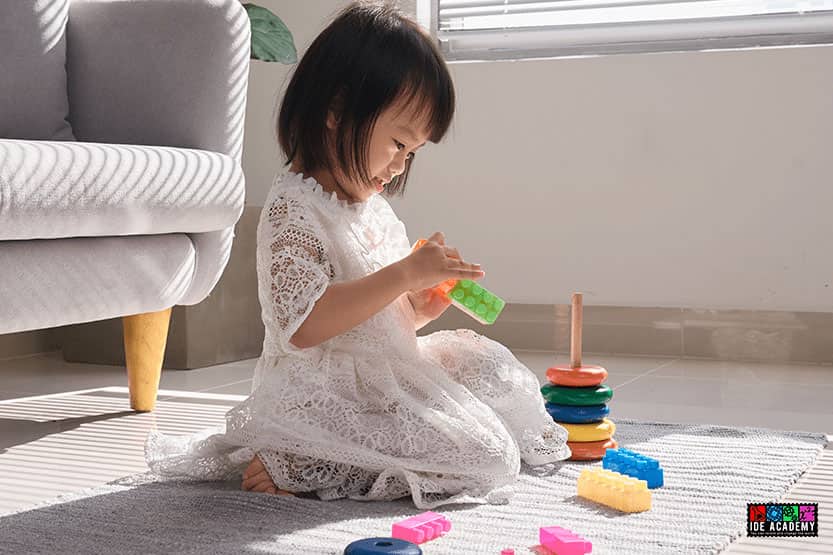Many parents have a common misconception that the best way to promote innovative thinking and an entrepreneurial mindset in their children is to step away completely and let them have free reign in getting creative. While kids may be naturally inquisitive, they require guidance to develop their creative thinking and reach their full potential.
This is a delicate balancing act for parents to maintain. When does your child need assistance? When should you step back? There is no straightforward answer to these questions.
Nevertheless, the most important thing you should keep in mind is that your main aim should not be to “teach” your child innovative thinking but to create a rich environment for creativity to grow and flourish. Besides enrolling your kid in classes that encourage innovative thinking, here are several ways you can nurture an entrepreneurial mindset in your child.
Tip #1: Encourage them to ask questions

As your child develops, it is natural for them to be curious about the world around them. To figure out how the world works, they tend to seek information by asking questions. Through this process, your child takes an active role in their own learning and develops the critical thinking skills needed in life. Therefore, as a parent, it is crucial for you to encourage this process.
What can you do to encourage your child to ask questions? For starters, it is vital for you to be receptive to your child’s questions and acknowledge them. A negative response will dissuade your child from asking further questions, as they might perceive that you do not want to answer their questions or that asking questions is not okay.
Conversely, a positive attitude makes your child feel good about being curious. So applaud them for their curiosity and praise them for asking new questions that expand their knowledge. Most importantly, let them know that there is no such thing as a silly or wrong question — regardless of how challenging some of them might seem to answer at the time.
However, this should not be a one-way street. You should ask your child questions too! When you ask questions, you model the practice of asking questions. By asking questions, you also challenge and encourage them to formulate their own answers and understanding. Remember that the way you phrase your questions is crucial. For example, instead of asking your child close-ended questions, ask questions that inspire curiosity. For example, “Why does it rain?” Questions like this might spark deeper learning about the way things work.
Tip #2: Remind them that there are multiple ways to solve a problem

Whether it is a puzzle or a play activity – like an obstacle course – your child should understand that there are multiple ways to solve a problem. This approach is something we often encourage in our STEM classes. By demonstrating that there are various methods to reach a resolution, you are encouraging your child to think outside the box.
An excellent way to approach this is to have your child break down the problem into achievable blocks and find the steps they need to take to solve the issue. Subsequently, they can generate and evaluate possible solutions to the problem. It is vital to be patient, as the best solution may not be the first or most obvious one.
Most importantly, you should celebrate and acknowledge the ideas they contribute, even if some solutions do not work out as intended. Recognizing your child’s contributions tells them that their opinions and ideas matter; it motivates them to keep exploring different ways of seeing and thinking!
Tip #3: Focus on the positives
It is okay if your child does not succeed at something on their first try. Sometimes, your child might not see it that way and may feel discouraged at their failed attempt. This is when you should step in as a parent to comfort your child. Acknowledge their emotions — whether it might be disappointment or frustration — when they face failure.
Remind your child that standing up after a failure and finding out where things went wrong in the process is a crucial part of their learning journey. When you guide your child through this process, they are better equipped to manage the failures that they will face in the future. Your child will be empowered with the confidence to try new things and develop innovative solutions that others may not dare to attempt.
Tip #4: Create opportunities for children to be creative

Creativity is a skill that gets better with practice. That is why creating opportunities for children to get creative is so important. The best way to nurture your child’s innovative mindset is to ensure that they have access to a broad range of materials to engage with creatively. From reusing recyclables to working on robotics kits, and even manipulating playdough, interacting with a variety of materials promotes the use of creativity.
While we often don’t have the space or resources to do this at home, STEM classes and arts and craft workshops are excellent platforms for your child to engage in creative work. These classes are often well-stocked with diverse materials to get children started on their own innovative projects. Additionally, your child can receive the appropriate guidance from the trainers and facilitators in class.
Tip #5: Encourage your child to take creative risks

Creative risk-taking is an excellent way for your child to learn to experiment and develop their critical thinking skills and an entrepreneurial mindset. Even if the outcome does not turn out the way they expected, they will be emboldened to innovate and try something different for future activities.
This is a mentality that all entrepreneurs need to have. As such, it should be highly encouraged in any circumstances, and not just in STEM classes. As a parent, what can you do to cultivate creative risk-taking in your child? You can start by allowing your child to have a sense of autonomy.
Provide them with opportunities to pick their own activities and play independently but remain within reach to offer a guiding hand if necessary. Acknowledge their efforts and encourage them with specific feedback like, “Great job! This is a creative way to approach this activity. How did you come up with this idea?”
At IDE Academy, we understand the importance of fostering innovative thinking in our students and nurturing them with a lifelong passion for inventiveness from a young age. Our programmes are carefully crafted to encourage students to think and express themselves creatively. If you would like to learn more about our courses, do not hesitate to contact us today!




